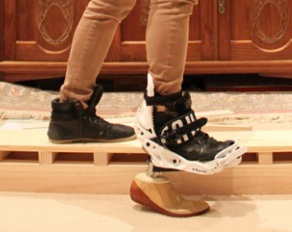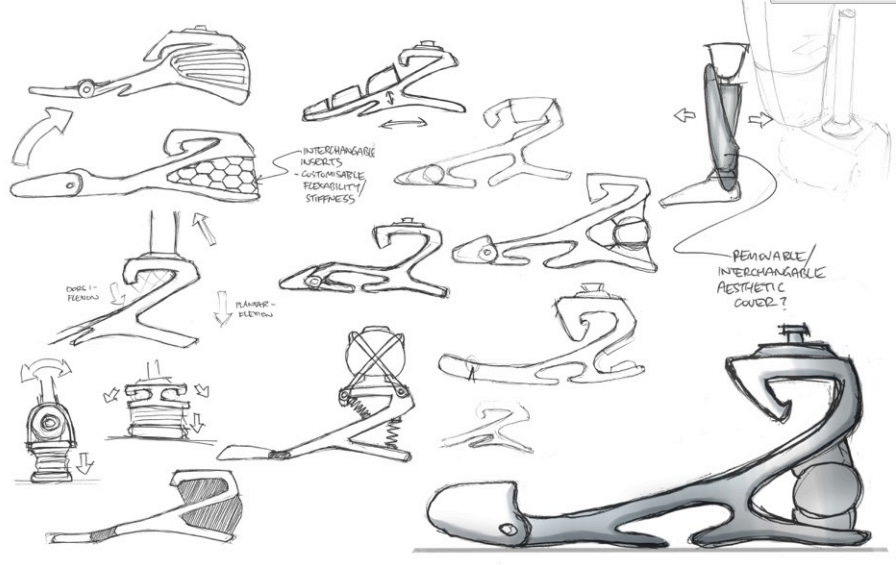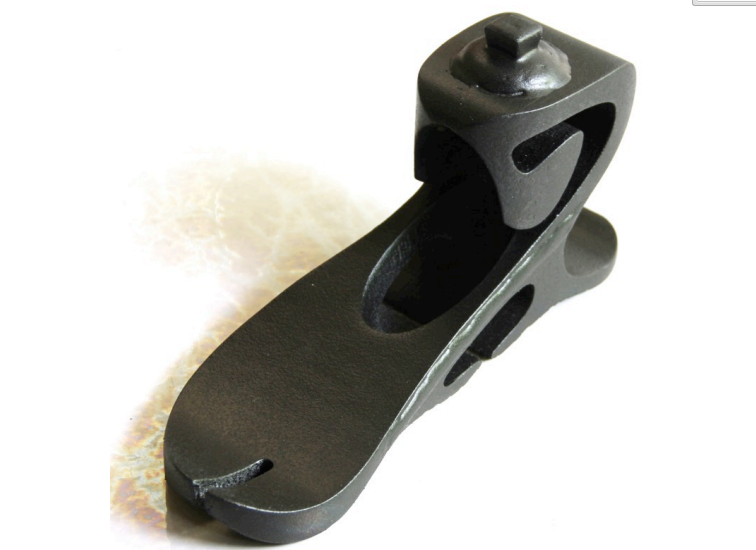 Considering that people challenged without limbs have been the recipients of prosthetics since ancient times, it’s safe to say that most consider something to be better than nothing. But as 3D printing continues to make huge strides in this area, those who are missing limbs no longer have to settle.
Considering that people challenged without limbs have been the recipients of prosthetics since ancient times, it’s safe to say that most consider something to be better than nothing. But as 3D printing continues to make huge strides in this area, those who are missing limbs no longer have to settle.
Researchers from Swinburne University of Technology in Australia have been busy studying the options and point this out as well. Not only does the technology have obvious promise due to customization and affordability, one area that 3D printing can also improve upon for those missing feet is in the area of gait. While historically many prostheses have been donated, such as the Solid Ankle Cushioned Heel (SACH) model, a fitting issue that raises continual concerns with doctors is that of how gait is affected. While having a prosthetic donated or provided at low cost is of course a fantastic thing, once the patient has gotten used to walking on it, gait can be the next hurdle in terms of how it affects strain on the working part of the leg, as well as alignment in general.
 In ‘Low-cost 3D-printable Prosthetic Foot,’ presented just recently at the Design4Health 2015 European Conference, by Jonathan Yap and Gianni Renda, the topic of how 3D printing can change the total outlook for children needing prosthetics in developing countries was explored in detail, along with the goal of actually finding a way to provide them with affordable, customized devices that can be replaced often and easily as they grow.
In ‘Low-cost 3D-printable Prosthetic Foot,’ presented just recently at the Design4Health 2015 European Conference, by Jonathan Yap and Gianni Renda, the topic of how 3D printing can change the total outlook for children needing prosthetics in developing countries was explored in detail, along with the goal of actually finding a way to provide them with affordable, customized devices that can be replaced often and easily as they grow.
The resulting physical prototype that they worked on is something very different than we’ve seen though–and not your average project rolling off the desktop 3D printer. The researchers and designers working on the prosthetic foot have created a smart design which allows for functioning energy-storing-and-return (ESR) feet. Not only that, their design can be produced for only AUD $15 wholesale, which translates to about $11 USD.
Using a MakerBot Replicator 2 with PLA and one-fourth inch threaded rods embedded to increase strength, the researchers made a prototype driven by the ESR concept which means energy is stored, transferred through the prosthesis, and released during the second and third phases of gait. Not just stopping there, they considered issues that can be associated with the ESR concept, as well as using the traditional SACH design to compare their progress against. Treating keel stiffness through the use of numerous 3D printed, customized inserts was the solution to one issue, with stability as an even greater focus.
Through six different CAD designs, researchers were able to narrow the design down to one that ensured successful gait, coupled with the proper ESR process. Using a ‘mounting pyramid’ design, they were able to promise users good alignment despite different personal gaits. For keel stiffness, they employed a squash ball inside the heel area, allowing for varying degrees of compression. Their next priority was in eliminating extra material, which they reduced in the mid-foot area allow better flexing.
Use of supports and rafts were required in 3D printing the three 1:4 prototypes on the MakerBot Replicator 2. With serious attention to each print, the researchers decided the 1:1 scale prototypes were best printed on their sides, “with the medial side of the prosthesis facing downwards; closest to the build platform.” Consideration was made for eliminating difficulty when removing supports as well as retaining parts strength.
With nearly 25 hours of 3D printing in the first build and consumption of 354g of PLA (including rafts and supports), cost for each prototype came to $8.12 AUD. Application of epoxy around the mid-foot area was used for extra strength, and sanding was involved to reach a smooth finish. Because of water-solubility issues, a rubber coating was applied with a layer of pumice grit to offer a non-skid quality.
“After prototype finishing was completed, and the squash ball inserted, the prosthetic foot weighed 340 grams–22 grams lighter than the SACH foot previously tested,” stated the researchers.
Upon actual testing, it was discovered that the squash ball wasn’t offering enough benefit, and there were other areas that needed refining.
“The subject identified that the inclusion of the squash ball made little-to-no difference to keel flexibility as the foot performed similarly when it was removed,” reported the researchers in their paper. “After repeated testing, the mounting pyramid eventually broke, indicating that reinforcement was necessary. Additionally, the prototype was fitted with various types of footwear, all of which implied form suitability.”
Compression issues and impact load were examined further, but in the end, while obviously some refining was still necessary, researchers found ‘superior stability’ over the SACH foot.
For their second build, the researchers spent significantly less time, logging in around 21 hours at the 3D printer, with 322g of PLA and a whole expense of about $7.38. After sanding and adding rubber epoxy as well as grit, the end weight for the prototype was 334 grams.
“As expected, the prototype performed to the same standard as the first iteration. Reinforcement appeared to be sufficient, as the prototype retained its strength for the entire duration of testing,” stated the researchers. “The reinforced mounting pyramid was also able to sufficiently cope with lateral forces exerted on it, suggesting that light levels of recreational sport (soccer) may be achievable with the prosthesis.”
“While testing confirmed the framework presented for a dynamic, weight bearing structure primarily produced with FDM PLA, further evaluation with transtibial amputees and controlled fatigue testing is warranted to validate the research findings.”
While affordability is of course spectacular as a benefit of this prosthesis model, the design offers better comfort in locomotion as well as when standing still. Stability is improved, as well as gait, and the prosthesis should prove to integrate well with standard shoes. The project overall shows a very positive outcome for providing youngsters in developing countries with more than suitable prostheses that can be adapted to their particular needs and sizing demands, with little expense.
Discuss your thoughts on how a design like this could change life for kids who need replacement limbs. Do you know anyone with a 3D printed prosthetic? Discuss in the 3D Printed Foot Prosthetics forum thread over at 3DPB.com.
Subscribe to Our Email Newsletter
Stay up-to-date on all the latest news from the 3D printing industry and receive information and offers from third party vendors.
You May Also Like
3D Printing Financials: Fathom Struggles in Financial Quicksand During Critical Transition
Facing a year of key transitions and financial pressures, Fathom (Nasdaq: FTHM) has filed its annual report for 2023 with the U.S. Securities and Exchange Commission (SEC). The document outlines...
Latest Earnings Overview for Australian 3D Printing Firms Titomic and AML3D
Australian 3D printing manufacturing firms Titomic (ASX: TTT) and AML3D (ASX: AL3) reported their financial results for the period from July to December 2023, marking the first half of their...
3D Printing Webinar and Event Roundup: April 7, 2024
Webinars and events in the 3D printing industry are picking back up this week! Sea-Air-Space is coming to Maryland, and SAE International is sponsoring a 3D Systems webinar about 3D...
3D Printing Financials: Unpacking Farsoon and BLT’s 2023 Performance
In the Chinese 3D printing industry, two companies, Farsoon (SHA: 688433) and Bright Laser Technologies, or BLT (SHA: 688333), have recently unveiled their full-year earnings for 2023. Farsoon reported increases...
































